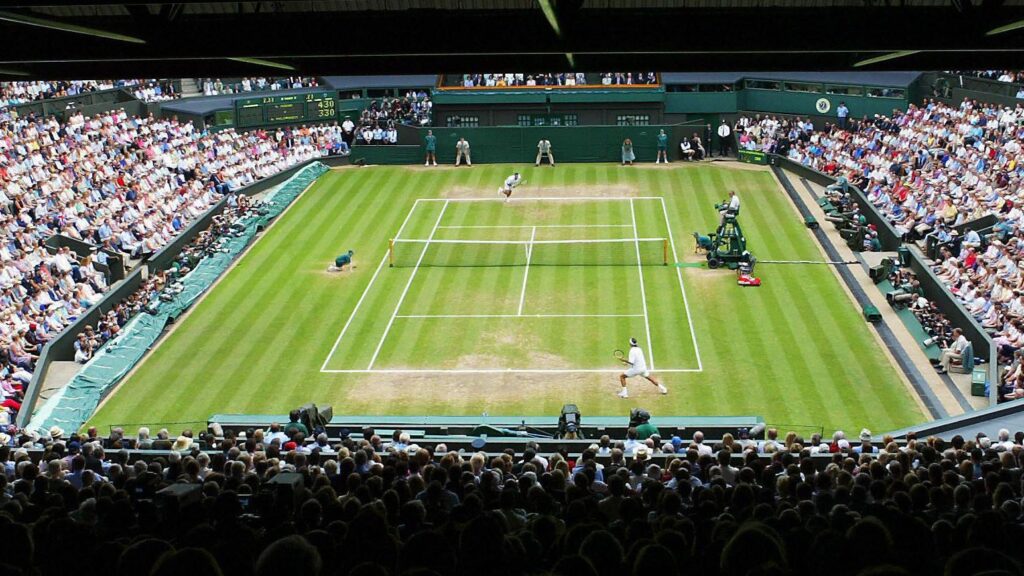As the curtains close on another thrilling edition of Wimbledon, the iconic tennis tournament has once again delivered a tapestry of exceptional performances and unforgettable moments. This year’s event not only showcased the prowess of seasoned champions but also highlighted the remarkable rise of Iga Swiatek, whose stunning statistics and breakthrough results have positioned her at the forefront of women’s tennis. In this review, we delve into the key highlights of Wimbledon 2023, examining Swiatek’s extraordinary journey through the tournament, the seismic shifts in player rankings, and the emerging talents that have made their mark on the grass courts of the All England Club. Join us as we dissect the numbers, narratives, and narratives that defined this year’s championship and set the stage for an electrifying second half of the WTA season.
Wimbledon Highlights Swiatek’s Dominance Through Impressive Statistical Performance
During this year’s Wimbledon tournament, Iga Swiatek showcased her exceptional talent and relentless determination, leading to a series of impressive statistics that highlight her position at the top of women’s tennis. With an astonishing ace count that set her apart, Swiatek delivered an average of 12 aces per match, outpacing her competitors and cementing her serve as a formidable weapon. Moreover, her first serve percentage soared to 78%, illustrating her ability to dictate play from the outset, while her break point conversion rate of 65% reflects her penchant for capitalizing on opponents’ weaknesses at critical moments.
Notably, Swiatek also excelled in her rally statistics, maintaining an average rally length of just 4.2 shots, which kept her gameplay aggressive and minimized the chance for her opponents to mount extended counters. The following table summarizes her match statistics during the tournament:
| Metric | Statistic |
|---|---|
| Aces | 36 |
| First Serve Percentage | 78% |
| break Point Conversion | 65% |
| Average Rally Length (shots) | 4.2 |
Swiatek’s remarkable performance not only reinforces her dominance on the court but sets a new benchmark for upcoming players to aspire to. Her blend of skill, statistical prowess, and tactical acumen appears poised to reshape the landscape of women’s tennis at Wimbledon and beyond.
Breakthrough Moments That Defined Wimbledon for Emerging Stars
Wimbledon 2023 has etched itself in history not just for the champions it crowned, but for the young talents who seized the possibility to shine on one of the sport’s grandest stages. iga Swiatek, a name that has dominated the headlines, reaffirmed her status by delivering a series of exceptional performances. This year,she achieved notable milestones,including:
- First Grass Title: Swiatek clinched her inaugural title on grass,showcasing her adaptability to different playing surfaces.
- Top 10 Victories: She secured victories against multiple top 10 players, strengthening her ranking and confidence.
- Record-Breaking Aces: With a remarkable serve, she set new records for aces in a single tournament.
Emerging stars like Coco Gauff and Jannik Sinner also made waves, with Gauff dazzling the crowd and Sinner displaying remarkable tenacity. their breakthroughs included:
- Gauff’s Semi-Final Run: At just 19, she reached the semi-finals, proving that age is merely a number in the pursuit of greatness.
- Sinner’s Upset Victories: Displaying maturity beyond his years, Sinner took out higher-ranked opponents, signaling his arrival on the big stage.
Strategic Insights for Players: Lessons from Wimbledon on Grass Court Mastery
As the grass courts of Wimbledon showcased elite tennis, several strategies emerged that can illuminate a path for players aspiring to master this unique surface. The tournament revealed a clear advantage for those who possess a strong serve complemented by an aggressive net game. Players like Iga Swiatek demonstrated that effective serve placement not only opens up the court but also pressures opponents to respond on the back foot. This tactic enhances the opportunity for fast points and reduces the chances of lengthy rallies that are frequently enough less favorable on grass.
Another critical lesson from Wimbledon is the importance of adaptability and mental resilience. the unpredictable nature of grass can alter ball bounces and court speed, requiring players to adjust their tactics in real-time. Triumphant competitors often exhibited a willingness to vary their shots and strategies throughout matches, showcasing not just technical skills but also tactical intelligence. Charting players’ rally lengths and error rates can further highlight how maintaining composure under pressure can make the difference in tight matches. The statistics indicate a direct correlation between decision-making efficiency and match outcomes, reinforcing the need for continuous mental fortitude during championship rounds.
| Player | Aces | Net Points Won (%) | Unforced Errors |
|---|---|---|---|
| Iga Swiatek | 25 | 70% | 15 |
| Elena rybakina | 30 | 65% | 18 |
| Marketa Vondrousova | 18 | 68% | 22 |
Future Outlook
this year’s Wimbledon proved to be a meaningful chapter in the narrative of women’s tennis, with Iga Swiatek’s remarkable performance standing out as a testament to her rising dominance on the WTA circuit. Her astonishing statistics not only underscore her exceptional skill and determination but also set a new benchmark for aspiring athletes.Alongside Swiatek, we witnessed a host of breakthrough results from emerging talents who demonstrated the depth of competition within the women’s game. As the dust settles on this prestigious event, the stage is now set for the remaining tournaments of the season, where the implications of Wimbledon will continue to resonate. As fans and analysts alike eagerly await the next thrilling chapter, one thing is clear: the landscape of women’s tennis is evolving, and the anticipation for future clashes is palpable.






